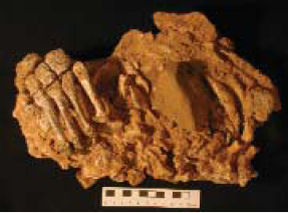Neandertals’ tough Stone Age lives
Neandertals that 43,000 years ago inhabited what’s now northern Spain faced periodic food shortages and possibly resorted to cannibalism to survive, according to a new investigation.

These Neandertals evolved shorter, broader faces with a less pronounced slope than northern European Neandertals did, say Antonio Rosas of the National Museum of Natural Sciences in Madrid and his colleagues.
Since 2000, the researchers have recovered more than 1,300 Neandertal bones and teeth from an underground-cave system known as El Sidrón. The fossils come from at least eight individuals, including one infant, one child, two adolescents, and four young adults.
Close examination of the ancient teeth revealed disturbances of enamel formation, especially in the children and teens, that Rosas and his coworkers attribute to near starvation. The team reports its results online and in the Dec. 19 Proceedings of the National Academy of Sciences. Furthermore, skulls and limb bones at El Sidrón display cut marks suggestive of butchering and show crushed areas, presumably where brains and marrow were removed during cannibalism, the scientists say.
In another analysis, they compared three Neandertal jaws from the site with jaws from 32 Neandertals and 23 modern Homo sapiens previously found at Stone Age sites throughout Europe and western Asia. Reconstructions of the lower faces indicate that Neandertals evolved into northern and southern varieties, the team claims.







